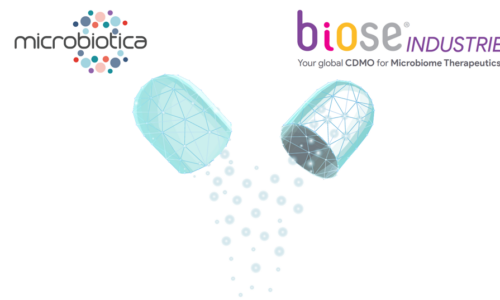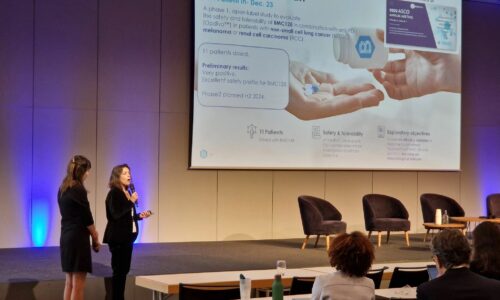Contract Development & Manufacturing Organizations (CDMOs) are critical partners for moving ahead with new drug products. But with a growing number of start-up companies working to develop microbiome-based products, are CDMOs ready to take on the challenges of manufacturing a whole new category of ‘living medicines’—live biotherapeutic products (LBPs)?
Bharat Dixit, VP, Biopharmaceutical Development & Manufacturing at Morningside BioPharma Advisory, who has broad pharmaceutical industry experience in process and product development, says significant differences exist between traditional drug manufacturing and LBP manufacturing.
“They are quite distinct, both in terms of the expertise – how you adapt from one strain to other strain – and what kind of R&D processes you develop,” he says. “It’s necessary to develop the right tools, the right mindset, the right approach. LBPs are far different from developing a product expressed in a microbial (E. coli) or mammalian (CHO) expression system.
Unique challenges of LBP manufacturing
Dixit sees adaptation of the facility and equipment as one of the major challenges of LBP manufacturing. He says,
“The majority of the LBP products (strains) are either facultative anaerobes or strict anaerobes. In the biologics world, most of the processes have been developed with the aerobic process in mind. Processes are not designed for anaerobes.”
Thus, it’s important for CDMOs and equipment manufacturers to think about building or customizing the equipment and even the framework for controlling the anaerobic process.
Secondly, he says, CDMOs face the challenge of dealing with the multivalent nature of many LBPs – or in other words, consortia-based products. Manufacturing several components (drug substances) separately and combining them at the end to create a final drug product is rare in the traditional pharmaceutical world, except for multivalent vaccines – but not uncommon for LBPs that are a consortia of defined bacterial strains.
“In developing a process, and keeping all these strains alive throughout the whole process, that’s an added difficulty compared to other biologics.
Moreover, he says,
“Every single strain is quite different, even though they might be from the same genus and species, there are differences at the strain level, in terms of the growth properties. So a process that might work for one strain of the same genus and a species at 100 liter, 500 liter scale, may not be directly applicable to another strain, even though the strains are from the same class. That’s typically not the case for traditional biologics.”
Rising to the challenge
“We put in the effort to understand the needs of the client: how we can provide what they need better and quicker? Because when you’re in development, every day is a new day that requires a new solution.”
Adrien Nivoliez, CEO, Biose Industrie
Adrien Nivoliez (PhD, MBA), CEO of the France-based Biose Industrie, is not one to shy away from these challenges. Nivoliez spent 13 years at the company before his appointment as CEO in 2017—and since then, he has led the company with a clear vision to make it into a fully integrated good manufacturing practice CDMO dedicated to LBPs.
Nivoliez, a trained microbiologist, says,
“LBP manufacturing was a natural progression, given my education and background: tying together biology, pharmaceuticals, and finance.” He successfully shaped the organization from a CMO into a CDMO that can work on any drug candidate microorganism – including anaerobic strains.
We have gained the capacity to work on a multitude of microorganisms,” he says. “We had to navigate through the increase in know-how regarding quality for process and for engineering.”
The company has grown from 60 to 160 employees over the past three years.
“We need to understand microbiology, understand the GMP world, and understand the regulatory needs to develop our clients’ projects.”
He says that becoming the go-to CDMO for LBPs came down to the team’s constant dedication to innovation.
“We put in the effort to understand the needs of the client: how we can provide what they need better and quicker? Because when you’re in development, every day is a new day that requires a new solution.”
Nivoliez adds,
“Every client brings unique challenges in the development of their LBP. Step by step we have to work through the development, to get to the delivery of the drug product.”
Enabling a new class of medicines
Those who have seen companies advance their LBPs over the past several years are optimistic about the possibilities of these drugs to address unmet needs in medicine.
Dixit says, “I see significant potential in the LBP field, and I think that there’s a lot more to come. This will become one of the major modalities of the therapeutic world in the coming years.”
Yet this new class of medicines will not come to fruition without expertise and innovation in the manufacturing processes. Nivoliez, for his part, enjoys helping support the growth and success of start-up companies by helping them through a critical stage of their drug development. He says,
“It’s great to help companies clear this hurdle: finding the process, to ensure the development and the stabilization of the microorganism drug candidate.”
Nor does the still-uncertain regulatory environment daunt Nivoliez. “In different countries we do have to create guidelines, establish laws, come up with new specifications. Companies will find new adaptations, new solutions.”
He maintains that microbiome medicinal products, including LBPs, are sure to be an important new category of medicines – and in time, it’ll be possible to see these drugs make a difference in people’s lives.
“There’s a very long evolutionary relationship of the microbes to the human body,”
Dixit adds.
“I do believe that this field is going to explode. What we need is more scientific evidence of underlying mechanisms of action, and a few positive readouts from ongoing late-stage LBP products to increase people’s confidence in these drugs.”


